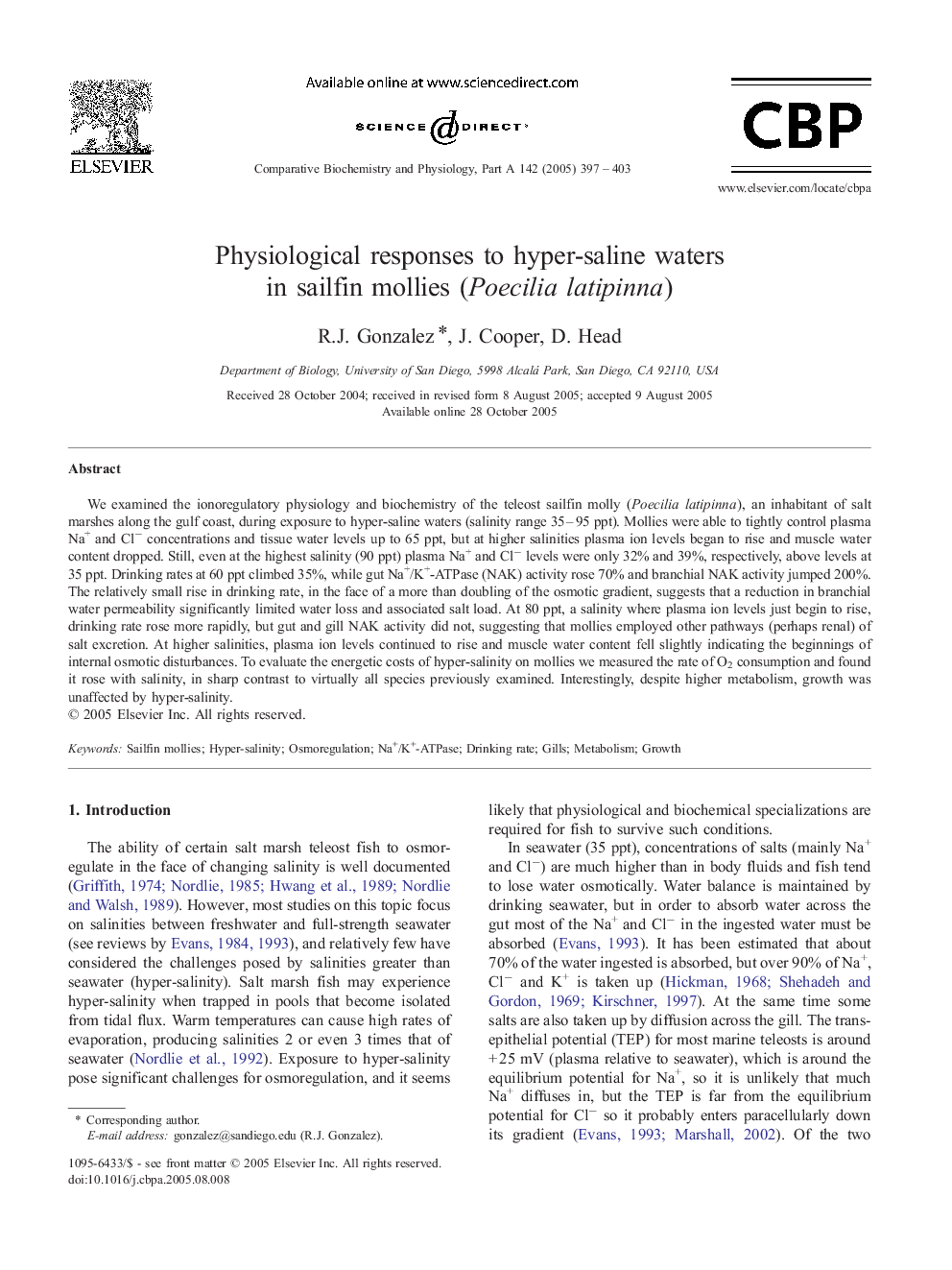| کد مقاله | کد نشریه | سال انتشار | مقاله انگلیسی | نسخه تمام متن |
|---|---|---|---|---|
| 10819040 | 1060340 | 2005 | 7 صفحه PDF | دانلود رایگان |
عنوان انگلیسی مقاله ISI
Physiological responses to hyper-saline waters in sailfin mollies (Poecilia latipinna)
دانلود مقاله + سفارش ترجمه
دانلود مقاله ISI انگلیسی
رایگان برای ایرانیان
کلمات کلیدی
موضوعات مرتبط
علوم زیستی و بیوفناوری
بیوشیمی، ژنتیک و زیست شناسی مولکولی
زیست شیمی
پیش نمایش صفحه اول مقاله

چکیده انگلیسی
We examined the ionoregulatory physiology and biochemistry of the teleost sailfin molly (Poecilia latipinna), an inhabitant of salt marshes along the gulf coast, during exposure to hyper-saline waters (salinity range 35-95 ppt). Mollies were able to tightly control plasma Na+ and Clâ concentrations and tissue water levels up to 65 ppt, but at higher salinities plasma ion levels began to rise and muscle water content dropped. Still, even at the highest salinity (90 ppt) plasma Na+ and Clâ levels were only 32% and 39%, respectively, above levels at 35 ppt. Drinking rates at 60 ppt climbed 35%, while gut Na+/K+-ATPase (NAK) activity rose 70% and branchial NAK activity jumped 200%. The relatively small rise in drinking rate, in the face of a more than doubling of the osmotic gradient, suggests that a reduction in branchial water permeability significantly limited water loss and associated salt load. At 80 ppt, a salinity where plasma ion levels just begin to rise, drinking rate rose more rapidly, but gut and gill NAK activity did not, suggesting that mollies employed other pathways (perhaps renal) of salt excretion. At higher salinities, plasma ion levels continued to rise and muscle water content fell slightly indicating the beginnings of internal osmotic disturbances. To evaluate the energetic costs of hyper-salinity on mollies we measured the rate of O2 consumption and found it rose with salinity, in sharp contrast to virtually all species previously examined. Interestingly, despite higher metabolism, growth was unaffected by hyper-salinity.
ناشر
Database: Elsevier - ScienceDirect (ساینس دایرکت)
Journal: Comparative Biochemistry and Physiology Part A: Molecular & Integrative Physiology - Volume 142, Issue 4, December 2005, Pages 397-403
Journal: Comparative Biochemistry and Physiology Part A: Molecular & Integrative Physiology - Volume 142, Issue 4, December 2005, Pages 397-403
نویسندگان
R.J. Gonzalez, J. Cooper, D. Head,